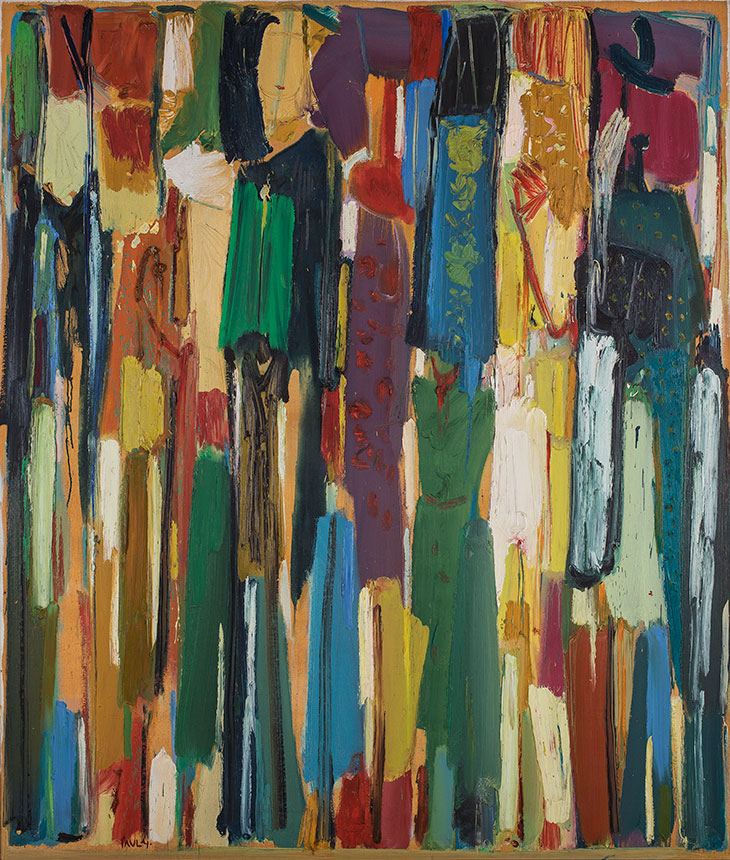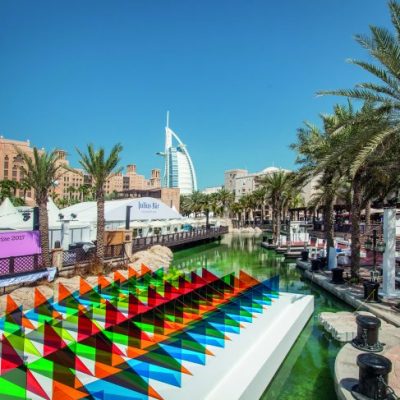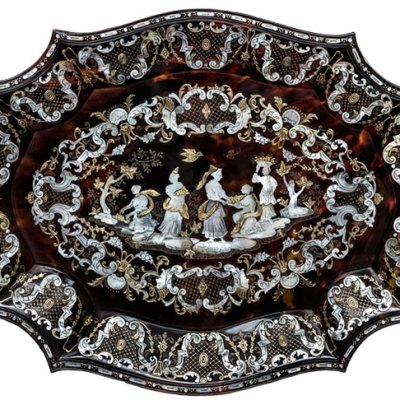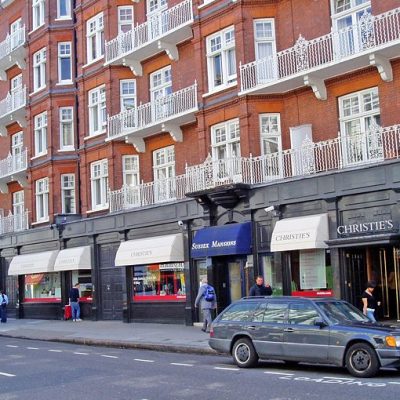The three Ds of debt, death and divorce have always fed the art market, but this month debt is also highlighting the lack of transparency in areas of this sector – particularly in the Middle East. The issues raised by the upcoming London auctions of the corporate collection of the Abraaj Group, the Dubai-based private equity company that filed for provisional liquidation (of Abraaj Holdings) earlier this year, and of works that featured in a catalogue of the private collection of its founder Arif Naqvi and his wife Fayeeza, offer plenty of food for thought.
At its peak, Abraaj managed around $14bn of global assets. Its investor list included the Bill & Melinda Gates Foundation, the International Finance Corporation (part of the World Bank) and, incidentally, the Essex County Council pension fund. As the financial press reported last month, the company had debts of over $1bn; it is also alleged to have misused investor money. As part of the provisional liquidation – a court-driven restructuring process that protects the company against a winding up petition filed by individual creditors – some of Abraaj’s assets went up for sale or tender.
In purely monetary terms, the corporate and the private art collections are relatively insignificant but the very public purchase at auction of works of art for both, largely at Christie’s Dubai, often for record sums way beyond the auction estimates, offers an example of how art is often used to gain not only publicity but international credibility. As visitors to Art Dubai can hardly fail to remember, Abraaj Group was the fair’s main sponsor since its inception in 2007.
Poet and the Bird (2006), Courtesy Bonhams

Bonhams is presenting some 200 works from the corporate collection in four sales – three at the auction house and one online. In the Islamic and Indian Art sale on 23 October, there is the ‘Samsara Collection’ of Indian paintings, mostly Pahari and Rajasthani miniatures. More Abraaj works follow in the Modern & Contemporary Middle Eastern Art (listed in the catalogue as ‘private collection, Dubai’) and the Modern and Contemporary South Asian Art and Art of Pakistan sales the following day. All works carrying a low estimate of £50,000 or under – that is, around 90 per cent of the lots – are being sold without reserve.
It seems that Naqvi is also being rather coy. There is no mention of his name as the consignor – if, indeed, he still owns the works – or in the listed provenance of 10 works in the Christie’s Middle Eastern, Modern and Contemporary Art auction on 24 October. Illustrated in a 2015 catalogue of highlights from Naqvi’s private collection, they are and now offered as ‘property from a distinguished private collection’. Christie’s is also offering further works privately to key clients. In terms of the auction, Christie’s understandably declined to comment on the identity of the consignor, citing client confidentiality. Yet it is pertinent, for there is an element of ambiguity over what constituted the corporate collection and what constituted the private. ‘As a potential buyer, I have concerns over the possible issue of title ownership regarding the works in the private collection, as would anyone after all one has read in the news about Abraaj,’ comments Charles Pocock of the Meem Gallery in Dubai. More generally, establishing clear title of ownership of works of art is arguably the biggest headache of the market today.
He is Merciful (2007), Mohammad Ehsai. Estimate £50,000–£100,000. Courtesy Bonhams

What is particularly striking about the offering is the at times huge discrepancy between prices paid and the current estimates. The most glaring example at Bonhams is the Iranian artist Mohammad Ehsai’s arresting, 3.4m-wide calligraphy He is the Merciful (2007), which was acquired at Christie’s Dubai in 2008 for over $1.1m and now comes to Bonhams bearing an estimate of £50,000–£100,000 – and no reserve. One of the cover lots is by Parviz Tanavoli, one of Iran’s most important contemporary sculptors and most valuable artist. His monumental bronze Poet and the Bird (2006), hammered down for $480,000 at Bonhams Dubai in 2008, carries the same estimate as Ehsai’s painting. Text-related work looms large here.
When we meet, Bonhams’ head of department for modern and contemporary Middle Eastern art, Nima Sagharchi, winces at my description of these auctions as a fire sale. ‘Don’t be fooled by these estimates,’ he says. ‘They are in line with those the works previously carried at auction. It is our strategy to price them extremely keenly.’ The 200 works – the core of the Abraaj collection (a few pieces have already been sold, including at Pundole’s in Mumbai) – thus come to the market with what he describes as a ‘reasonable’ total estimate of £2.5m–£3.5m.
It is pertinent to consider the context. ‘An unusual aspect of the Abraaj collection is how quickly it was compiled,’ Sagharchi explains. ‘It was amassed between 2006 and 2009, ambitiously, mainly at auction, and with a very aggressive bidding strategy. They went for headline lots.’ This was the time when the art market in the regional hub of Dubai seemed to spring up out of nowhere almost overnight, against a backdrop of peace in the Gulf, rising oil wealth and government-led cultural initiatives. The whole art ecosystem arrived more or less at once: galleries, fairs, auctions, museums and exhibitions and, it has to be said, both the good guys and the unscrupulous. The British Museum’s exhibition ‘Word into Art: Artists of the Modern Middle East’ in 2006 also proved influential. ‘Everyone wanted calligraphy,’ Pocock explains, ‘and the market provided it. Artists were regularly consigning new work directly to auction. Tastes – and fashions – have changed.’ Novice collectors invariably underestimate the role fashion plays in the art market, and they fail to anticipate vendors underbidding on works of art they consign.
Celebrations (1990), Paul Guiragossian. Estimate £40,000–£60,000. Courtesy Bonhams

These days it seems that buyers want Arab modernism. A fine example at Bonhams is the Armenian Lebanese artist Paul Guiragossian’s unusually upbeat Celebrations, painted in 1990, the year the civil war in Lebanon ended. Arab modernism, crucially, has an international client base – as does South Asian art. ‘The market [for South Asian art] is very bullish,’ Sagharchi says. ‘It also probably reached its peak in 2008 but there is more depth, stability and confidence here.’ The problem with the Iranian material is that economic sanctions now bar citizens of Iran from participating in international auctions. Add to this the travel and trade embargo imposed on Qatar by four Arab states last year, and the continued economic crisis in Dubai, and it is clear that business in the Gulf is not booming. ‘I would say the art market here is the weakest it has been for nine years,’ Pocock says with a sigh. ‘This is a reality check and we are seeing a market correction. The artists who played the game are now suffering.’ It is hard to see how the Abraaj debacle will not rattle confidence in this nascent art market still further. The sale may, of course, prove a huge success. After all, everyone loves a bargain.
The Indian and Islamic Art, Modern and Contemporary South Asian Art and Art of Pakistan, and Modern and Contemporary Middle Eastern Art sales at Bonhams London are on 23 and 24 October. The Middle Eastern, Modern and Contemporary Art sale at Christie’s London is on 24 October.



